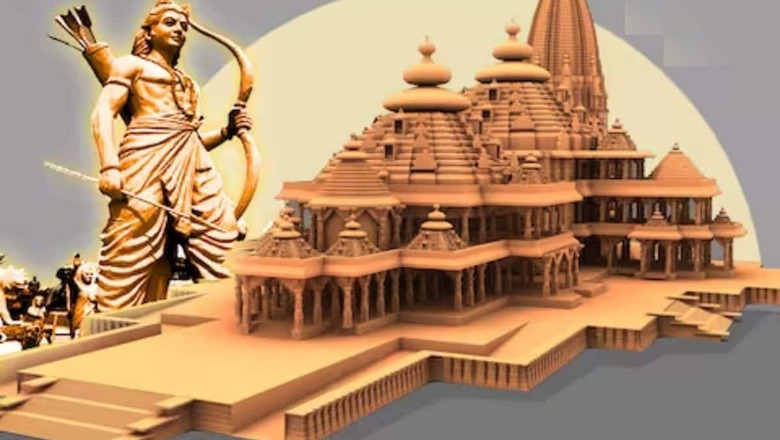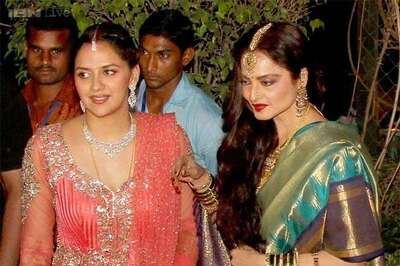
views
It is said that Shri Ram lives in the hearts of his devotees, as demonstrated by Hanuman in Treta Yuga. In contemporary times also, I had the privilege of knowing two such true devotees of Shri Ram personally and had the opportunity of hearing directly from them the glory of Shri Ram. I would like to refer to a message from one such devotee, K. Parasaran, for the book ‘The Light of Ramayana’ authored by Justice P. Kodanda Ramayya, another devout.
Lawyer K. Parasaran, the nonagenarian, who was the chosen one to reclaim Shri Ram’s birthplace in the title dispute in the Supreme Court, in his message for the book wrote, “Seeing the fall in values in every walk of life today, Justice Kodanda Ramayya had done remarkable service to humanity in focussing attention to the great and eternal values of life which he has drawn from the work of Valmiki. They are values and virtues practised by God Himself when he descended the earth in the Avatar of Sri Rama to demonstrate how an ideal man has to conduct himself in life in the path of Dharma.”
The message was of February 2, 1997. Both were passionately in love with Shri Ram as an epitome of virtue, it was very difficult for me to comprehend fully their passion initially. But now in January 2024, I see a similar passion across all sections of society in India and abroad for Shri Ram.
One must wonder what is it that makes Shri Ram evoke love, compassion and fear simultaneously in people’s hearts depending on how they conduct themselves in mundane human life.
The Bala Kanda of Valmiki Ramayana commences with the query posed by ascetic Valmiki to Sage Narada, “Who can possibly be full of virtues in this world at present?” In reply, Narada states that there is one descendant in the line of Ikswaku, known by the name of Rama as one, “who has fully controlled his mind, is very powerful, radiant and resolute and has brought his senses under control… He is a supporter of the creation like Brahma … a protector of living beings and a staunch defender of faith… He vies with the ocean in profundity and compares with Himalaya in point of firmness… In anger, he resembles the destructive fire at the end of creation and is a counterpart of Mother Earth in forbearance… is another Dharma as it were in point of truthfulness” (Bala Kanda, Valmiki Ramayana, Gita Press, pg.1-2).
Shri Ram, an avatar of Lord Vishnu, who chose Dasharatha as his father and Ayodhya as his place of birth, walked through the length of the nation during his 14 years of exile along with his wife Sita and brother Lakshman. His life was the message which has been narrated in various forms for thousands of years across India and beyond. Great humans leave behind their own lives as lessons for future generations. Truthfulness, compassion, valour, etc. on one hand and on the other, subjecting himself to dharma even on being persuaded to breach it by his own father, stand out as the traits of a human who showed how to live as one.
The glory of Shri Ram of Ayodhya, who lived during Treta Yuga, has been retold in every yuga thereafter that followed, i.e., Dvapara Yuga, and now in Kali Yuga. Herein, I would like to refer to one such instance in Dvapara Yuga. Pandavas, while undergoing their exile in the forest, are confronted with several challenges and miseries. In one such instance, Jayadratha abducted Draupadi while the Pandavas were away and coming to know of the same, the Pandavas defeated him in battle and brought Draupadi back with them. Distressed with the sufferings being undergone by Draupadi and his brothers in despair, Yudhisthira asked Maharshi Markandeya, “Is there anyone indeed who is more unfortunate than I am. Have you heard or seen of any such man before?” The entire story of Shri Ram is narrated to the Pandavas on how he was exiled to the forest for 12 years on the eve of his being crowned as Prince Regent and how he sacrificed the throne to uphold the dharma of being a son. His story of walking the path of dharma even in adversity was narrated which highlighted his characteristics of compassion, forgiveness, courage, and valour.
In Kali Yuga, the story of Shri Ram has been part of our cultural heritage, depicted in the stone carvings of temples built hundreds of years ago, and in literary compositions on Ramayana in multiple languages across India and beyond. It has been the heart and soul of fine arts which used the story of Shri Ram in diverse forms of art. Not to mention audio-visual mediums commencing from black and white movies onwards to television serials which carried the tradition of remembering the virtues of Shri Ram, which continues till date.
The story of the life of Shri Ram and the adversities suffered by him are beyond what most people would ever experience while treading on the path of dharma. He has been part of people’s conscience, irrespective of which times or under which ruler they lived. He lives in the hearts of a civilisation at the core of its existential identity, which could not be conquered nor pillaged by invaders or their unworthy successors.
One thing which has emerged out of the Ram Janmabhoomi movement spread over 500 years leading to the Pran Pratishtha on January 22, 2024, is that Shri Ram has surfaced to the conscious mind of a generation which is surrounded by materialism. Encouraging them to explore more about his life and probe why he has been revered for thousands of years. Of course, Shri Ram symbolises what Sanatana Dharma really stands for – a dharmic way of life, which retains at its core both the power to forgive and the necessity of destroying evil.
Shri Ram has therefore become a central figure in social and political discourse, only confirming that he was always there, somewhere deep, inside each one of us. Most of us were not even aware of his presence within our conscious mind until we experienced an ‘inexplicable innate joy’ on hearing about the return of Shri Ram to his rightful place. No wonder Shri Ram is our atmabandhu, who is always with us, whether we choose to acknowledge it or not.
Across the political spectrum, people admire Shri Ram’s ideals and are debating and measuring other’s conduct with reference to him as the benchmark. Shri Ram’s life has set the standards for human conduct even after thousands of years, across faiths.
His return to Ayodhya, after overcoming all the challenges over about 500 years, is the most significant moment in the history of mankind. It is the culmination of a prolonged struggle of people who believed in Shri Ram’s ideals which are now symbolised in the temple built at his birthplace. The greatest moment of modern history is happening during our lifetime, and some of us are privileged to be physically present, I believe, in a representative capacity on behalf of all those who cannot.
The father of our nation, Mahatma Gandhi, had always espoused for Ram Rajya in his writings. Framers of our Constitution have envisioned a constitutional democracy with dharma as the basis of governance. Every organ of the constitution was conceived to play its role adhering to its constitutional dharma, rule of law. The realisation of a dream after 500 years of struggle through constitutional institutions restores faith in ‘dharmo raksati raksitah’, i.e., adherence to dharma itself protects.
It is in this sense that it’s a moment of unprecedented celebration for Bharat, a civilisational state which has overcome thousand years of cultural, political, and religious depravities, but has shown resilience over generations of its inhabitants who battled without giving up. The fruits of several generations of unsung heroes who fought for upholding the ideals of Shri Ram have succeeded in harmoniously reclaiming their past with pride, selflessly guided by Shri Ram. The celebration of the life of Shri Ram across the country and his return to his place of birth from exile is indeed evidence of the spiritual liberation of Bharat.
The author is a Ram Bhakt, who happened to be one of the Counsel for Shri Ram Lalla in Supreme Court, and author of Maxims from Mahabharata. The views expressed in this article are those of the author and do not represent the stand of this publication.

















Comments
0 comment